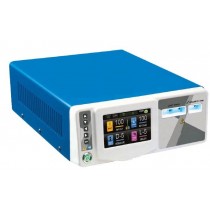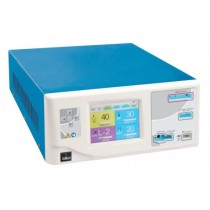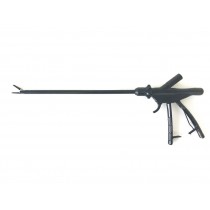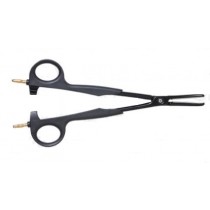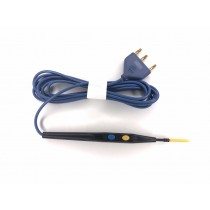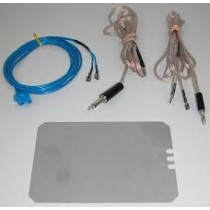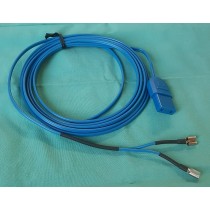Electrosurgical
Buying an Electrosurgical Unit (ESU) for your Practice
We carry new and used/refurbished units, with various options to choose from depending on your needs.
Thermocautery
The most basic machines are simple thermocautery units, burning the tissue to achieve hemostasis.
Such as: Disposable Cautery Pens.
Electrocautery Devices
Monopolar/unipolar and bipolar electrocautery devices, not to be confused with electrosurgical units, are used to cauterize, coagulate, cut and desiccate (dry) tissue. A Hyfrecator is an example of such a unit, and uses a low power continuous spark to destroy tissue or stop bleeding during minor surgery. Other than small applications, such as skin tags, wart removal, hemostasis, etc., these devices are not intended for cutting tissue. No grounding plate is required.
Bipolar electrocautery devices
The current between the two tips of a forcep thus reducing the risk of latent thermal energy. Available as stand-alone units and built into most major Electrosurgical Devices. This type of unit is used in ophthalmic, neurological, and laparoscopic procedures.
Radiofrequency
Radiofrequency (RF) is a high frequency alternating electrical current that can be used in either bipolar or monopolar mode.
Built into the cutting mode of most major Electrosurgical Devices for.
The Elman is an example of a popular Radiofrequency device .
Radiofrequency Ablation
Radiofrequency ablation (RFA), for arthroscopy, ENT, and gynecology, uses radio frequency to generate arcing through the bubbles formed between an active electrode and the tissue, with the tissue being vaporized by the arcing. Examples of such dedicated generators include the Stryker Serfas, Smith & Nephew Dyonics Vulcan, as well as units by Arthrex and Mitek.
The new Velocity Orthopedics Velox™ Arthroscopy Wand achieves superior ablation at a lower power setting, using a basic electrosurgical generator - Velocity Orthopedics Velox™ Advanced Power Technology (APT).
Electrosurgical Devices
Electrosurgical devices combine cutting, coagulation, electrocautery, electrosurgical, radiofrequency and alternating current (AC) to raise intracellular temperature in order to achieve tissue vaporization. Such devices have monopolar/unipolar and bipolar output and incorporate a grounding plate. Footswitches for the bipolar and cutting/coagulation functions are often offered as accessories.
Systems vary in power output, from 50 to 400 watts. Lower power models are for minor, office-type procedures, and the higher output units are intended for major procedures.
Monopolar/unipolar usage incorporates a grounding plate.
Newer models, such as the ValleyLab Force FX and the Whittemore Eagle, offer automatic impedance adjustment.
Electrothermal Bipolar Vessel Sealing (EBVS)
Introduced in 1998, EBVS is an electrosurgical technology for sealing blood vessels up to 7mm in diameter. In addition to sealing blood vessels, modern instruments are designed to grasp and cut a variety of tissues.
The ValleyLab Triad and Ligasure and the Whittemore Eagle models Two and Three combine vessel sealing functionality and a 400 watt electrosurgical system into one device, allowing for vessel sealing and bipolar electrocautery, as does a Triad.
A Ligasure and the Eagle Two do vessel sealing as well as bipolar cutting.
The Ligasure and the Triad only accept disposable instrumentation. The current Medtronic ForceTriad™ 2018 software prevents the reuse of disposable instruments.
The Whittemore Eagle Three incorporates bipolar resection with saline, which allows surgeons to perform a variety of urological and gynecological procedures in a saline environment, as developed for the Olympus UES-40. The new ForceTriad™ offers a software upgrade to do bipolar resection with saline.
Other energy platforms are available, such as the harmonic scalpel.
Harmonic Scalpel
A harmonic scalpel cuts via vibration, with minimal energy transfer to the surrounding tissues. Using a harmonic scalpel may be superior to electrocautery in that it can cut through thicker tissue, creates less toxic surgical smoke, and may offer greater precision. However, it only coagulates as it cuts. An example is the Ethicon Ultracision.
Surgical smoke is a potential hazard SMOKE EVACUATION SYSTEMS are used to reduce the risk of inhalation of surgical smoke.


